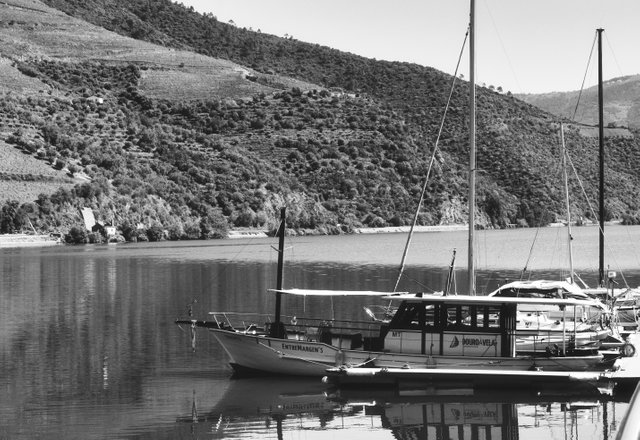📷Curiosities about the Azores Archipelago
Italy Community
✅1796 | The Wreck of the French Frigate Astrée at Santo Amaro do Pico
In the final years of the 18th century, the political and social movement known as the French Revolution became established following the storming of the Bastille on July 14, 1789. From that point forward, the feudal regime was abolished and the rights of man were proclaimed. However, the radicalism of the French revolutionaries frightened Europe, which, through a large coalition, united to fight the First French Republic (1792–1804). The war between France and Great Britain also stemmed from their intense colonial rivalry and their ambitions for maritime supremacy.
Portugal sought to maintain a position close to neutrality, as it needed to preserve good relations with Great Britain, the dominant maritime power, while also maintaining ties with Spain, which was allied with France and Portugal's continental neighbor.
In this context of Franco-British warfare, the French frigate Astrée had departed from the island of Guadeloupe in the French Antilles on January 1, 1796, heading for France with 180 people on board—including crew, passengers, and some English prisoners. It was also transporting a cargo of sugar and coffee. However, on January 29, 1796, the ship wrecked near Santo Amaro, on the northern coast of the island of Pico, with over a hundred lives lost.
Although there is little information on the events that transpired, it appears that the frigate began taking on water during its voyage. After several days in which the bilge pumps could no longer cope effectively, the ship faced serious risk of sinking. It then headed toward the Azores archipelago, hoping to find salvation in a neutral territory—but tragedy struck.
The day after the shipwreck, the Juiz de Fora (magistrate) of the island of Pico, Dr. Luiz Correia Teixeira Bragança, went “to the place of Santo Amaro, in the jurisdiction of the town of São Roque on this Island of Pico, at the port of said location,” to assess the situation. He conducted “an inventory of the shipwreck of the French frigate that washed ashore in this place of Santo Amaro,” which was signed by several witnesses.
In the preamble to the inventory or “description of what was salvaged from the wreck,” the clerk Joaquim Joze da Roza wrote:
[…] we found that the frigate had been broken into pieces, having struck some shoals to the east of this port, and that the sea (being very stormy in this place and season) quickly carried away most of the said frigate, leaving only on some rocks above those where a large pile of ropes and some sails were gathered, entangled with pieces of masts at the entrance to the port. Another large pile of sails and ropes was floating on the sea, being tied with a hawser. These ropes were found on top of the rocks, and on the coast only a few pieces of masts were recovered, all with iron rings. The said magistrate had them measured and found one to be fifty-five spans long and the other thirty, both ten spans in thickness […] and the dead bodies of the unfortunate drowned. From the crew, fifty-seven people were found on land, including seven Englishmen who had swum ashore and reached land in one of the frigate’s boats with the help of locals. They told the magistrate in their language that the frigate was French and named Astrée, carrying a cargo of sugar and coffee belonging to the Convention. It had departed from the island of Guadeloupe headed for France on the first of this month, commanded by Captain Darbon, with 180 people on board including officers, passengers, and crew, as well as eighteen pieces of artillery. […] But water had started leaking in, increasing over time, and unable to stop it, they had to throw overboard the artillery (except for two six-caliber pieces), some anchors, hawsers, and other superfluous items, and set course for these islands in hopes of being saved. They also said that among the drowned was a general named Chevron, who had been governor on the island of Saint Eustatius and was returning to France as a wounded war passenger; also the captain, four officers, and two midshipmen had perished. Of the fifty who were saved, all were sailors and crew members, and the Englishmen were war prisoners, five of whom also drowned. […]
This report from the Juiz de Fora of Pico Island, dated February 16, 1796, was later referenced in an official letter from the interim governors of Angra to the Minister of the Kingdom, dated March 26.
On the preceding January 29, a French frigate named Astrée was wrecked on that island, having diverted there due to flooding, coming from the Antilles, specifically from the port of Basse-Terre on the island of Guadeloupe. It was carrying sugar and coffee bound for France, under the Convention. The crew of the said frigate consisted of 180 people including officers, troops, and crew. 138 perished in the shipwreck, and 57 survived, including 7 English prisoners and 50 French, who were sent to the island of Faial for easier transport. […]
The interim governors
Fr. José, Bishop of Angra, governor
Luiz de Moura Furtado
The existing documentation in the BPARLSR in Angra do Heroísmo also includes a letter from the Juiz de Fora of Pico Island dated June 3, 1796, which includes a “map of the wages earned in the salvage and recovery of the wreckage of the French Frigate Astrée, which washed ashore in this place of Santo Amaro on this island of Pico on January 29 of this present year 1796.” This map lists the names of the 25 residents who participated in the rescue and recovery operations between February 10 and April 17, as well as the number of days they worked and the amount they were paid.
In research conducted in French documentation, it was found that the frigate Astrée was built in Brest, had 40 cannons, and was in service between May 1780 and July 1795. Additional information states: “5/1795 – lost with crew and cargo in the Atlantic.” It seems, therefore, that the shipwreck of the frigate L’Astrée was not recorded in the history of the French Navy and that the ship was considered lost in May 1795, approximately eight months before its actual shipwreck at Santo Amaro.
The news of this shipwreck was lost over time, but some residents of Santo Amaro still retain a vague memory of the wreck of “a French frigate.” In August 2008, according to media reports, a team of researchers from the Regional Directorate for Culture of the Azores located, for the first time, the wreckage of the frigate Astrée, which sank on January 29, 1796.
I am sharing photos of landscapes, moments and experiences. Nature and sea are the most visited themes in my photo collection, but any attention-grabbing aspect can be photographed. Hope you enjoy it...
| Category | #italy |
| Photo taken at | Douro Valley - Portugal |
)


Upvoted! Thank you for supporting witness @jswit.
Excelente información la que compartes, amigo mío.
Obrigado pela visita e pelo comentário....tudo de bom :)
Saludos.
Thanks for stopping by :) I really appreciate the support :) Cheers :)